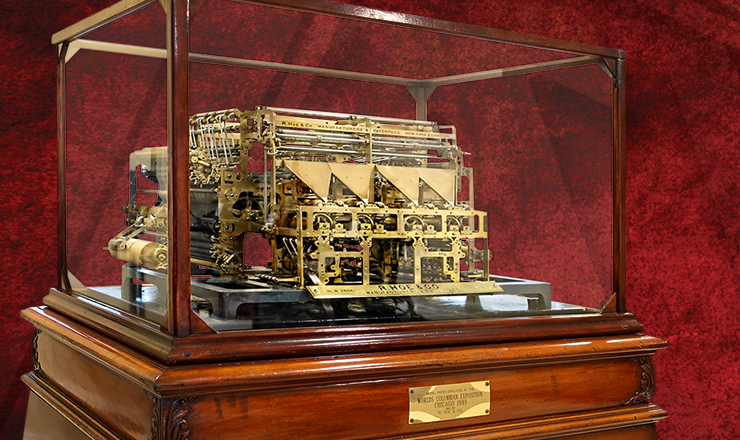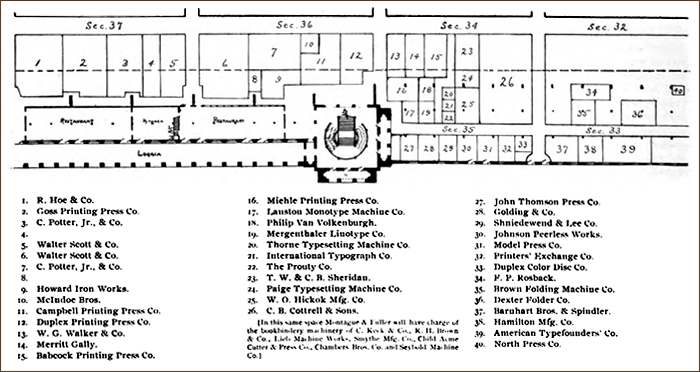On May 1, 1893, President Grover Cleveland opened the Chicago World’s Columbian Exposition. The fair was named in honour of the 400th anniversary of Christopher Columbus’ discovery of the new world known as America.
The Expo was awarded to Chicago in 1890. That alone was quite an achievement for the young city - winning the bid to stage the world’s biggest event less than 20 years after the devastating Great Chicago Fire in 1871. The 2-day fire claimed 300 lives, destroyed hundreds of miles of roads, razed 17,500 buildings, and left 100,000 people, a third of Chicago’s population, homeless.
The 1893 Columbian Exposition was often touted as the most significant of all world fairs that preceded or came after it. The statistics were mind-blowing – the site occupied nearly 700 acres, was dubbed The White City, had 200 temporary main buildings built, 46 countries participated, and more than 27.3 million visitors came to the 6-month-long event. It is also reported that the Chicago World’s Expo was profitable, unlike the other exhibitions.
The fair was designed right from the start to be the symbol of “American Exceptionalism,” which was evident in the grandeur and glamour of the festival. The fierceness of the competition among the participants was legendary. President Cleveland declared the World’s Columbian Exposition open by pressing a button that magically turned on all the lighting and set in motion all engines and equipment in the fair. Westinghouse won the bid to electrify the exhibition by severely undercutting the main competitor, General Electric.
Many of the day’s industry leaders were represented at the fair, and many new inventions were showcased for the first time – such as the Ferris Wheel (reported to be the top money-maker at the expo), moving sidewalks, early zipper, and many other new or new & improved technological innovations. Introduced were also new food items such as Cracker Jack, Aunt Jemima’s Pancake mix, Wrigley’s Chewing Gum, and many more popular things that can still be found at supermarkets today.
Forty-six countries exhibited at the Columbian Expo grandly, but equally as exciting were perhaps the smaller contingents and exhibits from far-flung “exotic” places worldwide. One example was the Javanese pavilion featuring the traditional gamelan musical ensemble accompanying beautiful dancers from Java, Dutch East Indies (now Indonesia). One of the rare recorded audios from the 1893 Expo, still in existence today, was that of the Javanese gamelan music. Harvard psychologist Benjamin Ives Gilman recorded the sounds and music from the Exposition on wax cylinders. Listen to a short snippet HERE.
The Battle of The Giants
The printing and book manufacturing industries participated in the World’s Columbian Exposition in a significant way. Most of this sector’s exhibits were in the Machinery Hall, where several newspapers were produced and printed live daily.
A visit to the Machinery Hall in the afternoon was especially deafening but a delightful experience as the visitors were treated to witness the Battle of the Giants vying for supremacy among the newspaper press manufacturers. The mammoth presses at the R. Hoe & Co., Goss Printing Press, C. Potter Jr., König & Bauer exhibits, and others showed off their prowess – bigger, faster, better – as they produced the evening papers live.
The Daily News was run on Hoe’s lightning-speed Sextuple press, the Evening Post was printed on a Potter Perfecting press, the Mail & Journal was assigned to Goss, and another paper was produced on a König & Bauer press. The Evening Dispatch was printed on a Walter Scott press, as well as the collaborative Expo’s Daily Columbian newspaper.

Now in our Collection, this model was displayed at the R. Hoe & Co. exhibit in the Machinery Building at the Chicago World’s Columbian Exposition in 1893. It is beautifully crafted in brass and an authentic replica of the Hoe Sextuple press, complete with rotating gears, cylinders, and other finely detailed components.

Some of the companies exhibiting in the Machinery Hall are listed below. Many of these machine makers are represented in our Collection at the Howard Iron Works Printing Museum today.
• R. Hoe & Co. • Goss Printing Press Co. • C. Potter Jr., & Co. • Walter Scott & Co. • Howard Iron Works • McIndoe Bros. • Campbell Printing Press Co. • Duplex Printing Press Co. • W.G. Walker & Co. • Merrit Gally • Babcock Printing Press Co. • Miehle Printing Press Co. • Lanston Monotype Machine Co. • Mergenthaler Linotype Co. • Thorne Typesetting Machine Co. • International Typograph Co. • The Prouty Co. • T. W. & C. B. Sheridan • Paige Typesetting Machine Co. • W.O. Hickok Mfg. Co. • C. B. Cottrell & Son • John Thomson Press Co. • Golding & Co. • Shniedewend & Lee Co. • Johnson Peerless Works • Model Press Co. • Printers’ Exchanger Co. • Duplex Color Disc Co. • F. P. Rosback • Brown Folding Machine Co. • Dexter Folder Co. • Barnhart Bros. & Spindler • Hamilton Mfg. Co. • American Typefounders’ Co. • North Press Co. • Karl Krause Maschinenfabrik • Gebrüder Brehmer Maschinenfabrik • Schnellpressenfabrik König & Bauer GMBH.
Pride and grandeur, fierce competitions, and eye-opening new inventions and discoveries - the Chicago World's Columbian Exposition had it all - and then some. One-upmanship was unmistakable: the case of William Cody of Buffalo Bill Show. Cody, very keen on participating in the biggest show on earth, went to the Expo organizers with an idea, but could not agree to the terms whereby half of the proceeds (not profit) was to be handed over to the Expo. The smart and ever-enterprising man that Cody was - he went behind the Expo organizers' backs and leased a parcel of land directly adjacent to the Expo site. From across the street, Cody staged his Buffalo Bill Wild West show.
Cody continued to upstage the Expo organizers throughout the six-month run of the Expo. When the organizers declined Chicago Mayor Harrison's suggestion to set aside a day for children from poor families to enter the Expo ground for free, Bill Cody stepped up. He quickly announced free admission to his show and candies for all children - 15,000 children showed up. Bill Cody was hailed as a “Champion of The Poor." It was reported that, at the end of the six months, Cody pocketed about a million-dollar profit (about 25 million in today’s dollars) without putting a penny in the coffers of the Expo.
On the darker side - a serial killer, H. H. Holmes, was believed to have roamed the Expo grounds, stalked visitors and killed as many as 27. When finally caught, Holmes was only convicted and executed for nine murders. Just two days before the closing of the World's Columbian Exposition, Chicago Mayor Carter Harrison was gunned down in his own home by Patrick Eugene Prendergast, a mentally ill and delusional former supporter. The Expo closing ceremony was planned to be full of pomp and pageantry, but the horror of the assassination would somewhat shade it.
On October 30, 1893, the 6-month-long fair finally closed. All but one of the main buildings has gone, and some pavilions were relocated elsewhere. But, the legacy of the 1893 Chicago World’s Columbian Exposition left an immeasurable positive impact on the City of Chicago and the country as a whole – in commerce and economy, technology advances, architecture, international relations, and most of all, the country’s pride of presenting to the world the American Exceptionalism at its best.
Stay up-to-date with the latest museum news and activities.
SUBSCRIBE
